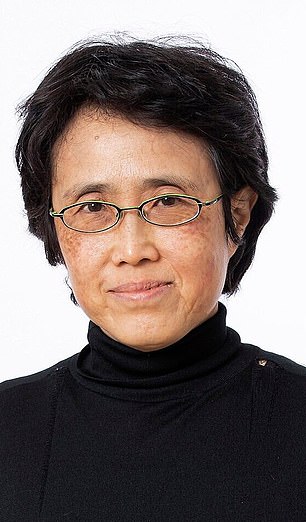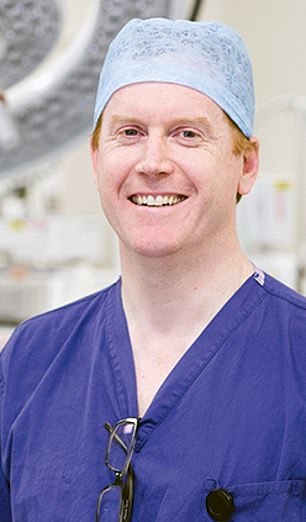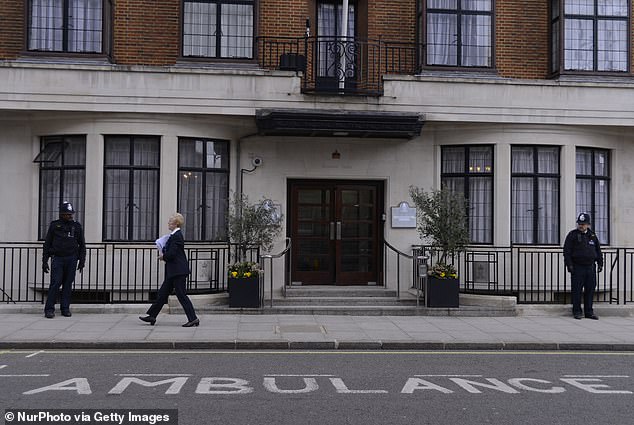Sarah Ferguson’s health history revealed – from her ‘scary’ breast cancer diagnosis and mastectomy to ‘disturbing’ melanoma detection
Sarah Ferguson last night revealed her shock skin cancer diagnosis, which comes just a few months after she was treated for breast cancer.
The Duchess of York, 64, had a number of moles removed during breast reconstruction last year. One turned out to be malignant.
The mother-of-two was described as ‘in good spirits’ after the ‘disturbing’ news.
Following her diagnosis with malignant melanoma – the fifth most common form of cancer in Britain – she has urged fans to ‘be diligent’ and check their moles.
Here, MailOnline details the Duchess’s health history.
In June 2023, it emerged that the Duchess had been diagnosed with breast cancer and had undergone a successful one-off mastectomy.

Speaking on her podcast Tea Talks with the Duchess and Sarah, Sarah Ferguson, 64, in July said she didn’t feel she had been ‘brave’ or ‘courageous’
Breast cancer diagnosis
In June 2023, it emerged that the Duchess had been diagnosed with breast cancer and had undergone a successful one-off mastectomy at King Edward VII’s Hospital in London.
Her cancer nightmare began in the spring, when a routine mammogram appointment in London revealed something was seriously wrong before the coronation.
The test in early May showed that there was a ‘shadow’ in her chest.
A source close to the Duchess told the Mail on Sunday: ‘Most people usually associate breast cancer with a lump, but that’s not always the case.

The Duchess opened up about how Beatrice and Eugenie had reacted to her breast cancer diagnosis, saying it had been ‘terrifying’ for the whole family
‘A lump can be detected by the patient, but this was a ‘shadow’, which can go unnoticed because it is a wider spread of cancer cells that can be picked up by screening.
‘In Sarah’s case, a biopsy was taken from the shadowy area of tissue and a few days later the results came back to confirm the diagnosis: breast cancer.’
Due to the size of the area affected, a lumpectomy was ruled out and Sarah was strongly advised to proceed with a single mastectomy.
Doctors said a mastectomy would eradicate the shadow of cancer cells on the breast.
The Duchess was said to be devastated but was determined to go ahead with a mastectomy as soon as possible, telling her friends she had ‘no choice’ but to go ahead with the operation.


The Duchess thanked the two incredible surgeons Christina Choy and Stuart James who performed the operation and the entire medical team who worked tirelessly to help her
Christina Choy was the surgeon who performed the mastectomy.
Speaking on her Tea Talks with the Duchess and Sarah podcast in July, Sarah said she didn’t feel she had been ‘brave’ or ‘courageous’.
Recounting how Beatrice and Eugenie had reacted to her diagnosis, she said: ‘I think it’s scary for every family member out there, you really start to look at your own demise. It’s a wake-up call and you think: how do I deal with this?’
Once the mastectomy was completed, plastic surgeon Stuart James, once praised by Tatler magazine as one of the country’s best breast doctors, took over and performed breast reconstruction using the ‘DIEP flap’ technique.
The special procedure is so complex that only highly skilled surgeons are allowed to attempt it.

The 64-year-old was diagnosed with the disease and underwent a successful one-off mastectomy at King Edward VII’s Hospital in London
It involves making an incision in the abdomen and removing fat from the stomach to form a new breast.
Experts say this can take more than six hours because it involves microvascular surgery, which involves cutting and then rejoining delicate 2mm blood vessels.
After the operation, a friend of the Duchess said: ‘The operation took a very long time – eight hours long – and there was more to it than people think.
“The message she wants to get out today is that she is very grateful to those who saved her and that she feels very lucky to be alive.”
Diagnosis of malignant melanoma
Last night the Duchess revealed she is battling skin cancer.
Several moles were removed during reconstructive surgery after her mastectomy in June.
Only one mole was identified as cancer.
A spokesperson for Sarah, Duchess of York said: ‘Following her diagnosis with an early form of breast cancer this summer, Sarah, Duchess of York has now been diagnosed with malignant melanoma.
‘Her dermatologist requested that several moles be removed and analyzed at the same time that the Duchess underwent reconstructive surgery following her mastectomy, and one of these has been identified as cancerous.
‘She is undergoing further investigation to ensure this is caught at an early stage.’

Sarah Ferguson has been diagnosed with malignant melanoma. Pictured: The Duchess of York at the Christmas morning service at Sandringham Church
The spokesperson added that it is “concerning” to be re-diagnosed so soon after breast cancer treatment, but that she remains “in good spirits.”
“The Duchess would like to thank the entire medical team who supported her, especially her dermatologist, whose vigilance ensured that the disease was detected when it occurred,” the spokesperson added.
‘She believes her experience underlines the importance of checking the size, shape, color and texture and the appearance of new moles that could be a sign of melanoma.’
The Duchess will be treated by Dr. Andrew Furness, a medical oncologist at the Royal Marsden Hospital in London, and by Catherine Borysiewicz, a dermatologist at the King Edward VII Hospital in London.
